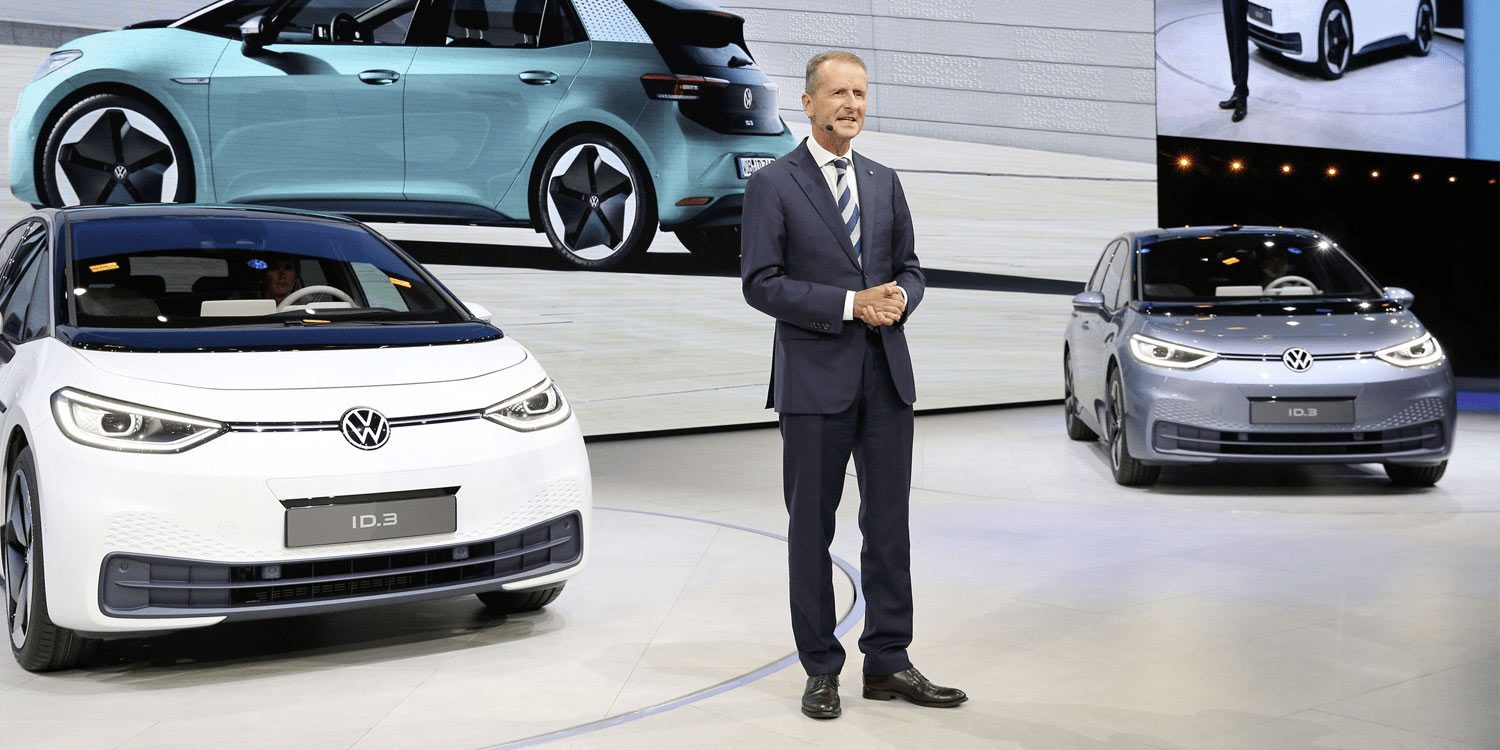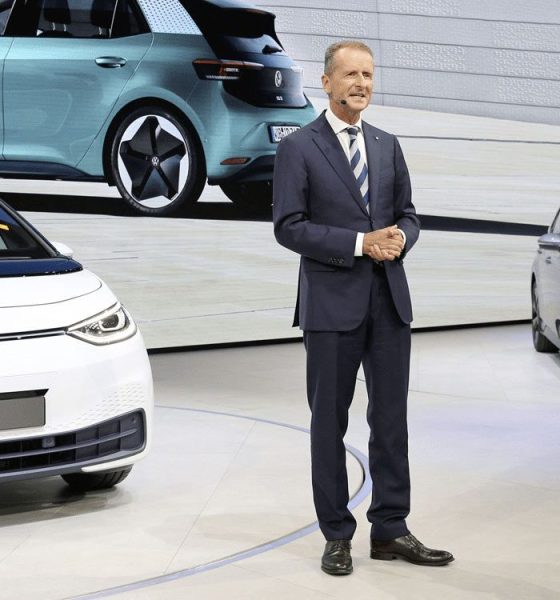

News
Volkswagen's software issues with the ID.3 are worse than reported: 'It is an absolute disaster'
The software issues plaguing the Volkswagen ID.3 have been reported for some time, but new details from insiders at the German automaker have hinted that the all-electric hatchback’s problems may be worse than initially reported. The update comes amidst a confirmation of the ID.3’s software challenges by a VW spokesperson.
Local media reports have indicated that Volkswagen will likely only release a toned-down version of the ID.3 at first due to the ongoing problems with the vehicle’s software. Thus, Volkswagen will probably still stick with its long-communicated delivery schedule this summer, as noted by CEO Herbert Diess while presenting annual figures last week. To accomplish this, “one or the other planned function” of the ID.3 will reportedly be canceled, and later delivered through an update.
These details were confirmed by a Volkswagen spokesperson, who addressed the topic in a statement to news outlet sueddeutsche.de. “Things are not going great,” the spokesperson said. Insiders quoted by the publication painted a much graver picture. “It is no longer a laughing matter,” the insiders noted.
The publication’s sources indicated that the ID.3 is far from being ready for the market and that Volkswagen is “not even close to an industrial production process at ID.3.” As for the vehicles that will reportedly be delivered this coming summer, the insiders related that they would be tasked to “tinker them by hand so that something is there.” This does not have anything to do with series production, though.
An internal source from Volkswagen explained that ID.3’s software issues were mostly due to a lack of qualified personnel. But apart from the lack of programmers and vehicle software specialists, key individuals have also been departing from VW. Among these is Martin Hoffman, the CIO responsible for Volkswagen’s IT division, who will be leaving the automaker at the end of this month. “It’s an absolute disaster. We just can’t get the people,” the insiders said.
Amidst these issues, Volkswagen is reportedly tagging in an unlikely ally to help prepare the ID.3 for production. This ally would be Daimler, which is already in talks with BMW for joint software development. A small meeting between some of Volkswagen and Daimler’s key executives was reportedly held recently, and it was discussed how the two automakers could collaborate to develop an operating system for cars. Such a deal would likely put Daimler in a tricky situation, as cooperation among Germany’s three top automakers is very unlikely.
Overall, it appears that the importance of in-vehicle software is becoming more and more evident among Germany’s automakers, and it seems that Volkswagen would do what it can to make sure that it can at least reduce the lead currently enjoyed by Tesla. The American electric car maker had shunned existing supply chains when it was developing its electric cars’ software, developing its in-vehicle systems from scratch. Unlike traditional automakers, Tesla’s software runs on a central control unit, giving it a much more efficient structure that is optimized for software updates and maintenance.

News
Tesla FSD fleet is nearing 7 billion total miles, including 2.5 billion city miles
As can be seen on Tesla’s official FSD webpage, vehicles equipped with the system have now navigated over 6.99 billion miles.

Tesla’s Full Self-Driving (Supervised) fleet is closing in on almost 7 billion total miles driven, as per data posted by the company on its official FSD webpage.
These figures hint at the massive scale of data fueling Tesla’s rapid FSD improvements, which have been quite notable as of late.
FSD mileage milestones
As can be seen on Tesla’s official FSD webpage, vehicles equipped with the system have now navigated over 6.99 billion miles. Tesla owner and avid FSD tester Whole Mars Catalog also shared a screenshot indicating that from the nearly 7 billion miles traveled by the FSD fleet, more than 2.5 billion miles were driven inside cities.
City miles are particularly valuable for complex urban scenarios like unprotected turns, pedestrian interactions, and traffic lights. This is also the difference-maker for FSD, as only complex solutions, such as Waymo’s self-driving taxis, operate similarly on inner-city streets. And even then, incidents such as the San Francisco blackouts have proven challenging for sensor-rich vehicles like Waymos.
Tesla’s data edge
Tesla has a number of advantages in the autonomous vehicle sector, one of which is the size of its fleet and the number of vehicles training FSD on real-world roads. Tesla’s nearly 7 billion FSD miles then allow the company to roll out updates that make its vehicles behave like they are being driven by experienced drivers, even if they are operating on their own.
So notable are Tesla’s improvements to FSD that NVIDIA Director of Robotics Jim Fan, after experiencing FSD v14, noted that the system is the first AI that passes what he described as a “Physical Turing Test.”
“Despite knowing exactly how robot learning works, I still find it magical watching the steering wheel turn by itself. First it feels surreal, next it becomes routine. Then, like the smartphone, taking it away actively hurts. This is how humanity gets rewired and glued to god-like technologies,” Fan wrote in a post on X.
News
Tesla starts showing how FSD will change lives in Europe
Local officials tested the system on narrow country roads and were impressed by FSD’s smooth, human-like driving, with some calling the service a game-changer for everyday life in areas that are far from urban centers.

Tesla has launched Europe’s first public shuttle service using Full Self-Driving (Supervised) in the rural Eifelkreis Bitburg-Prüm region of Germany, demonstrating how the technology can restore independence and mobility for people who struggle with limited transport options.
Local officials tested the system on narrow country roads and were impressed by FSD’s smooth, human-like driving, with some calling the service a game-changer for everyday life in areas that are far from urban centers.
Officials see real impact on rural residents
Arzfeld Mayor Johannes Kuhl and District Administrator Andreas Kruppert personally tested the Tesla shuttle service. This allowed them to see just how well FSD navigated winding lanes and rural roads confidently. Kruppert said, “Autonomous driving sounds like science fiction to many, but we simply see here that it works totally well in rural regions too.” Kuhl, for his part, also noted that FSD “feels like a very experienced driver.”
The pilot complements the area’s “Citizen Bus” program, which provides on-demand rides for elderly residents who can no longer drive themselves. Tesla Europe shared a video of a demonstration of the service, highlighting how FSD gives people their freedom back, even in places where public transport is not as prevalent.
What the Ministry for Economic Affairs and Transport says
Rhineland-Palatinate’s Minister Daniela Schmitt supported the project, praising the collaboration that made this “first of its kind in Europe” possible. As per the ministry, the rural rollout for the service shows FSD’s potential beyond major cities, and it delivers tangible benefits like grocery runs, doctor visits, and social connections for isolated residents.
“Reliable and flexible mobility is especially vital in rural areas. With the launch of a shuttle service using self-driving vehicles (FSD supervised) by Tesla in the Eifelkreis Bitburg-Prüm, an innovative pilot project is now getting underway that complements local community bus services. It is the first project of its kind in Europe.
“The result is a real gain for rural mobility: greater accessibility, more flexibility and tangible benefits for everyday life. A strong signal for innovation, cooperation and future-oriented mobility beyond urban centers,” the ministry wrote in a LinkedIn post.
News
Tesla China quietly posts Robotaxi-related job listing
Tesla China is currently seeking a Low Voltage Electrical Engineer to work on circuit board design for the company’s autonomous vehicles.

Tesla has posted a new job listing in Shanghai explicitly tied to its Robotaxi program, fueling speculation that the company is preparing to launch its dedicated autonomous ride-hailing service in China.
As noted in the listing, Tesla China is currently seeking a Low Voltage Electrical Engineer to work on circuit board design for the company’s autonomous vehicles.
Robotaxi-specific role
The listing, which was shared on social media platform X by industry watcher @tslaming, suggested that Tesla China is looking to fill the role urgently. The job listing itself specifically mentions that the person hired for the role will be working on the Low Voltage Hardware team, which would design the circuit boards that would serve as the nervous system of the Robotaxi.
Key tasks for the role, as indicated in the job listing, include collaboration with PCB layout, firmware, mechanical, program management, and validation teams, among other responsibilities. The role is based in Shanghai.
China Robotaxi launch
China represents a massive potential market for robotaxis, with its dense urban centers and supportive policies in select cities. Tesla has limited permission to roll out FSD in the country, though despite this, its vehicles have been hailed as among the best in the market when it comes to autonomous features. So far, at least, it appears that China supports Tesla’s FSD and Robotaxi rollout.
This was hinted at in November, when Tesla brought the Cybercab to the 8th China International Import Expo (CIIE) in Shanghai, marking the first time that the autonomous two-seater was brought to the Asia-Pacific region. The vehicle, despite not having a release date in China, received a significant amount of interest among the event’s attendees.








